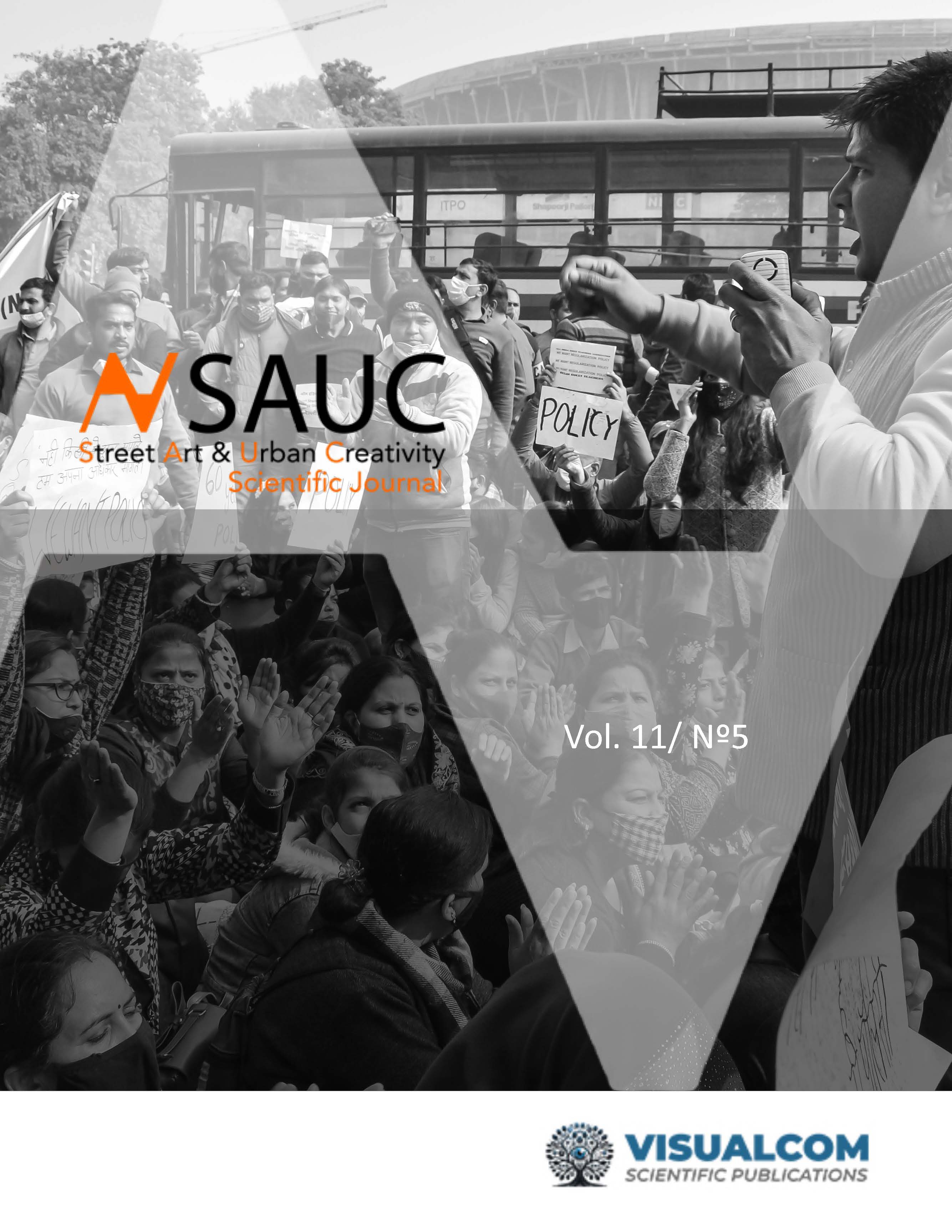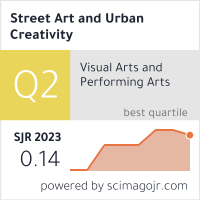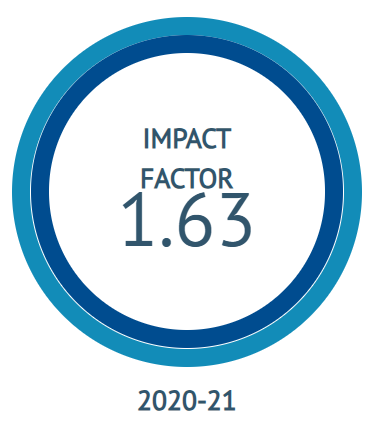Review of the Psychological and Neural Evidence Concerning the Uncanny Valley Theory
DOI:
https://doi.org/10.62161/sauc.v11.5838Keywords:
Uncanny Valley, Emotional response, Neuroimaging, Perception, Human face, Artificial intelligenceAbstract
This article reviews the psychological and neuroscientific evidence concerning the Uncanny Valley theory, originally proposed by Masahiro Mori in 1970. The theory posits that human affinity towards robots increases with their realism, but only up to a certain point, beyond which emotional responses become markedly negative. Neuroimaging studies suggest that this phenomenon stems from perceptual conflicts within the brain. Recent technological advances have made it possible to develop increasingly realistic humanoid robots and animated characters, thereby reshaping human–technology interactions. This study emphasises the significance of the human face as a central stimulus in social identification, an especially pertinent issue in light of developments in generative image-based artificial intelligence, which demands heightened accuracy in reproducing human features. How we navigate this phenomenon will shape the future of our relationship with emerging technologies.
Downloads
Global Statistics ℹ️
|
790
Views
|
332
Downloads
|
|
1122
Total
|
|
References
Bagdasarian, M. T., Hilsmann, A., Eisert, P., Curio, G., Müller, K. R., Wiegand, T., & Bosse, S. (2020, May). EEG-based assessment of perceived realness in stylized face images. Twelfth international Conference on Quality of multimedia experience (QoMEX) (pp. 1-4). IEEE.
Cavanagh, P. (2005). The artist as neuroscientist. Nature, 434(7031), 301-307, https://doi.org/10.1038/434301a
Cha, H. S., Chang, W. D., Shin, Y. S., Jang, D. P., & Im, C. H. (2015). EEG-based neurocinematics: challenges and prospects. Brain-Computer Interfaces, 2(4), 186-192. https://doi.org/10.1080/2326263X.2015.1099091
Cheetham, M., Suter, P., & Jäncke, L. (2011). The human likeness dimension of the «uncanny valley hypothesis»: behavioral and functional MRI findings. Frontiers in human neuroscience, 5, 126. https://doi.org/10.3389/fnhum.2011.00126
Cheetham, M., & Jancke, L. (2013). Perceptual and category processing of the uncanny valley hypothesis' dimension of human likeness: some methodological issues. Journal of visualized experiments: JoVE, (76), 4375. https://doi.org/10.3791/4375
Chen, J., Zhang, G., Chiou, W., Laidlaw, D. H., & Auchus, A. P. (2020). Measuring the Effects of Scalar and Spherical Colormaps on Ensembles of DMRI Tubes. IEEE Transactions on Visualization and Computer Graphics, 26(9), 2818–2833. https://doi.org/10.1109/TVCG.2019.2898438
Chen, Y., Stephani, T., Bagdasarian, M. T., Hilsmann, A., Eisert, P., Villringer, A., Bosse, S., Gaebler, M., & Nikulin, V. V. (2024). Realness of face images can be decoded from non-linear modulation of EEG responses. Scientific Reports, 14(1). https://doi.org/10.1038/s41598-024-56130-1
de Borst, A. W., & de Gelder, B. (2015). Is it the real deal? Perception of virtual characters versus humans: an affective cognitive neuroscience perspective. Frontiers in psychology, 6, 576. https://doi.org/10.3389/fpsyg.2015.00576
Diel, A., & Lewis, M. (2024). Rethinking the uncanny valley as a moderated linear function: Perceptual specialization increases the uncanniness of facial distortions. Computers in Human Behavior, 157, 108254. https://doi.org/10.1016/j.chb.2024.108254
Duchaine, B., & Yovel, G. (2015). A revised neural framework for face processing. Annual review of vision science, 1(1), 393-416. https://doi.org/10.1146/annurev-vision-082114-035518
Geller, T. (2008). Overcoming the uncanny valley. IEEE computer graphics and applications, 28(4), 11-17. https://doi.org/10.1109/MCG.2008.79
Ghazanfar, A. A., & Shepherd, S. V. (2011). Monkeys at the movies: what evolutionary cinematics tells us about film. Projections, 5(2), 1-25. https://doi.org/10.3167/proj.2011.050202
Igaue, T., & Hayashi, R. (2023). Signatures of the uncanny valley effect in an artificial neural network. Computers in Human Behavior, 146, 107811. https://doi.org/10.1016/j.chb.2023.107811
Kätsyri, J., Förger, K., Mäkäräinen, M., & Takala, T. (2015). A review of empirical evidence on different uncanny valley hypotheses: support for perceptual mismatch as one road to the valley of eeriness. Frontiers in psychology, 6, 390. https://doi.org/10.3389/fpsyg.2015.00390
Khare, S. K., Blanes-Vidal, V., Nadimi, E. S., & Acharya, U. R. (2024). Emotion recognition and artificial intelligence: A systematic review (2014–2023) and research recommendations. Information fusion, 102, 102019. https://doi.org/10.1016/j.inffus.2023.102019
Kuang, B., Li, X., Li, X., Lin, M., Liu, S., & Hu, P. (2021). The effect of eye gaze direction on emotional mimicry: A multimodal study with electromyography and electroencephalography. NeuroImage, 226, 117604. https://doi.org/10.1016/j.neuroimage.2020.117604
Ladwig, P., Ebertowski, R., Pech, A., Dörner, R., & Geiger, C. (2023). Towards a Pipeline for Real-Time Visualization of Faces for VR-based Telepresence and Live Broadcasting Utilizing Neural Rendering., 2301.01490. http://arxiv.org/abs/2301.01490
MacGillivray, C. (2007, August). How psychophysical perception of motion and image relates to animation practice. En Computer Graphics, Imaging and Visualisation (CGIV 2007) (pp. 81-88). IEEE. https://doi.org/10.1109/CGIV.2007.48
Bagdasarian, M. T., Hilsmann, A., Eisert, P., Curio, G., Müller, K. R., Wiegand, T., & Bosse, S. (2020, May). EEG-based assessment of perceived realness in stylized face images. In 2020 twelfth international Conference on Quality of multimedia experience (QoMEX) (pp. 1-4). IEEE. https://doi.org/10.1109/QoMEX48832.2020.9123145
Mones, B., & Friedman, S. (2011, March). Veering around the Uncanny Valley: Revealing the underlying structure of facial expressions. In Face and Gesture 2011 (pp. 345-345). IEEE Computer Society. https://doi.org/10.1109/FG.2011.5771423
Mori, M. (1970). Bukimi no tani [The uncanny valley]. Energy, 7, 33.
Mori, M., MacDorman, K. F., & Kageki, N. (2012). The uncanny valley. IEEE Robotics and Automation Magazine, 19(2), 98–100. https://doi.org/10.1109/MRA.2012.2192811
Mustafa, M., & Magnor, M. (2016, December). EEG based analysis of the perception of computer-generated faces. In Proceedings of the 13th european conference on visual media production (cvmp 2016) (pp. 1-10). https://doi.org/10.1145/2998559.2998563
Ota, C., & Nakano, T. (2021). Neural correlates of beauty retouching to enhance attractiveness of self-depictions in women. Social Neuroscience, 16(2), 121-133. https://doi.org/10.1080/17470919.2021.1873178
Pennefather, P. P. (2023). Creative prototyping with generative AI: Augmenting creative workflows with generative AI. New York: Apress. https://doi.org/10.1007/978-1-4842-9579-3_10
Petrova, E. (2021). The Image of the Information Society in Culture: Optimism Gives Way to Pessimism?. Voprosy filosofii, (8), 25-35. https://doi.org/10.21146/0042-8744-2021-8-25-35
Proverbio, A. M., Vanutelli, M. E., & Viganò, S. (2019). Remembering faces: The effects of emotional valence and temporal recency. Brain and Cognition, 135, 103584. https://doi.org/10.1016/j.bandc.2019.103584
Reuten, A., Van Dam, M., & Naber, M. (2018). Pupillary responses to robotic and human emotions: The uncanny valley and media equation confirmed. Frontiers in psychology, 9, 774. https://doi.org/10.3389/fpsyg.2018.00774
Rosenthal-Von der Pütten, A. M., Krämer, N. C., Maderwald, S., Brand, M., & Grabenhorst, F. (2019). Neural mechanisms for accepting and rejecting artificial social partners in the uncanny valley. Journal of Neuroscience, 39(33), 6555-6570. https://doi.org/10.1523/JNEUROSCI.2956-18.2019
Sadeh, B., Podlipsky, I., Zhdanov, A., & Yovel, G. (2010). Event‐related potential and functional MRI measures of face‐selectivity are highly correlated: a simultaneous ERP‐fMRI investigation. Human brain mapping, 31(10), 1490-1501. https://doi.org/10.1002/hbm.20952
Sarigul, B., & Urgen, B. A. (2023). Audio–visual predictive processing in the perception of humans and robots. International Journal of Social Robotics, 15(5), 855-865. https://doi.org/10.1007/s12369-023-00990-6
Sasaki, K., Ihaya, K., & Yamada, Y. (2017). Avoidance of novelty contributes to the uncanny valley. Frontiers in psychology, 8, 1792. https://doi.org/10.3389/fpsyg.2017.01792
Saygin, A. P., Chaminade, T., & Ishiguro, H. (2010). The perception of humans and robots: Uncanny hills in parietal cortex. Proceedings of the Annual Meeting of the Cognitive Science Society, 32(32).
Saygin, A. P., Chaminade, T., Ishiguro, H., Driver, J., & Frith, C. (2012). The thing that should not be: Predictive coding and the uncanny valley in perceiving human and humanoid robot actions. Social Cognitive and Affective Neuroscience, 7(4), 413–422. https://doi.org/10.1093/scan/nsr025
Schindler, S., Zell, E., Botsch, M., & Kissler, J. (2017). Differential effects of face-realism and emotion on event-related brain potentials and their implications for the uncanny valley theory. Scientific reports, 7(1), 45003. https://doi.org/10.1038/srep45003
Seyama, J. I., & Nagayama, R. S. (2009). Probing the uncanny valley with the eye size aftereffect. Presence: Teleoperators and Virtual Environments, 18(5), 321-339. https://doi.org/10.1162/pres.18.5.321
Seymour, M., Riemer, K., & Kay, J. (2017). Interactive realistic digital avatars-revisiting the uncanny valley, Human-Computer Interaction: Information design utilizing behavioral, neurophysiological, and design science methods, 50(4), 547-556. http://hdl.handle.net/10125/41216
Urgen, B. A., Kutas, M., & Saygin, A. P. (2018). Uncan ny valley as a window into predictive processing in the social brain. Neuropsychologia, 114, 181-185. https://doi.org/10.1016/j.neuropsychologia.2018.04.027
Vaitonytė, J., Alimardani, M., & Louwerse, M. M. (2023). Scoping review of the neural evidence on the uncanny valley. Computers in Human Behavior Reports, 9, 100263. https://doi.org/10.1016/j.chbr.2022.100263
Wang, Y., & Quadflieg, S. (2015). In our own image? Emotional and neural processing differences when observing human–human vs human–robot interactions. Social cognitive and affective neuroscience, 10(11), 1515-1524. https://doi.org/10.1093/scan/nsv043
Wilson, V. A., Kade, C., Moeller, S., Treue, S., Kagan, I., & Fischer, J. (2020). Macaque gaze responses to the primatar: a virtual macaque head for social cognition research. Frontiers in Psychology, 11, 1645. https://doi.org/10.3389/fpsyg.2020.01645
Yashin, A. S. (2023, September). A Challenge for Bringing a BCI Closer to Motor Control: The «Interface Uncanny Valley» Hypothesis. In 2023 IEEE Ural-Siberian Conference on Computational Technologies in Cognitive Science, Genomics and Biomedicine (CSGB) (pp. 242-247). IEEE. https://doi.org/10.1109/CSGB60362.2023.10329830
Downloads
Published
How to Cite
Issue
Section
License
Copyright (c) 2025 Authors retain copyright and transfer to the journal the right of first publication and publishing rights

This work is licensed under a Creative Commons Attribution-NoDerivatives 4.0 International License.
Those authors who publish in this journal accept the following terms:
-
Authors retain copyright.
-
Authors transfer to the journal the right of first publication. The journal also owns the publishing rights.
-
All published contents are governed by an Attribution-NoDerivatives 4.0 International License.
Access the informative version and legal text of the license. By virtue of this, third parties are allowed to use what is published as long as they mention the authorship of the work and the first publication in this journal. If you transform the material, you may not distribute the modified work. -
Authors may make other independent and additional contractual arrangements for non-exclusive distribution of the version of the article published in this journal (e.g., inclusion in an institutional repository or publication in a book) as long as they clearly indicate that the work was first published in this journal.
- Authors are allowed and recommended to publish their work on the Internet (for example on institutional and personal websites), following the publication of, and referencing the journal, as this could lead to constructive exchanges and a more extensive and quick circulation of published works (see The Effect of Open Access).













